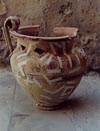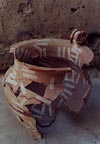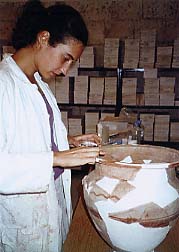
Discovery context
Discovered on the cricket ground excavation in 1996, this krater, 46 cm high, was lying in Hellenistic era levels. The characteristic volute handles and the style of its decoration allow it to be dated to the 3rd century BC. Such vases generally served for mixing water and wine.


